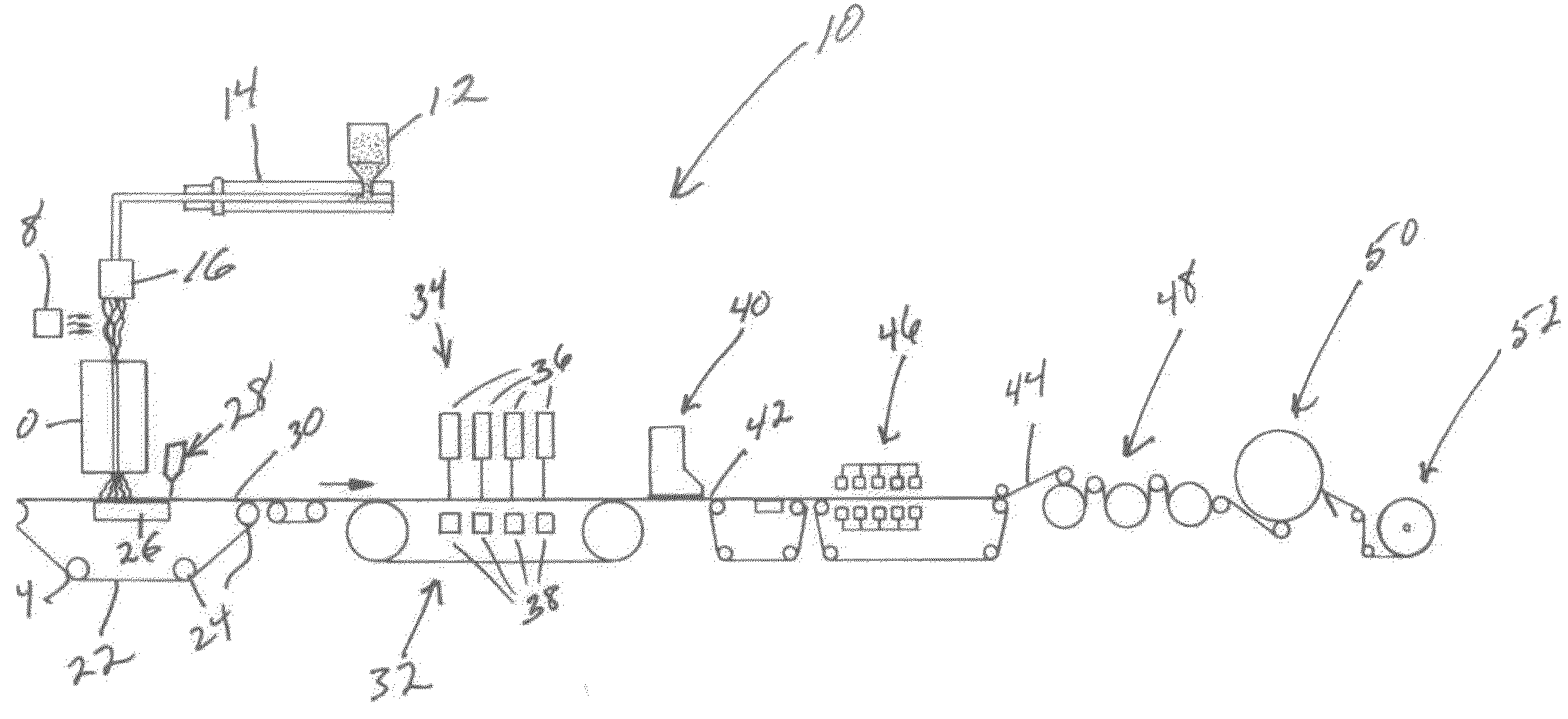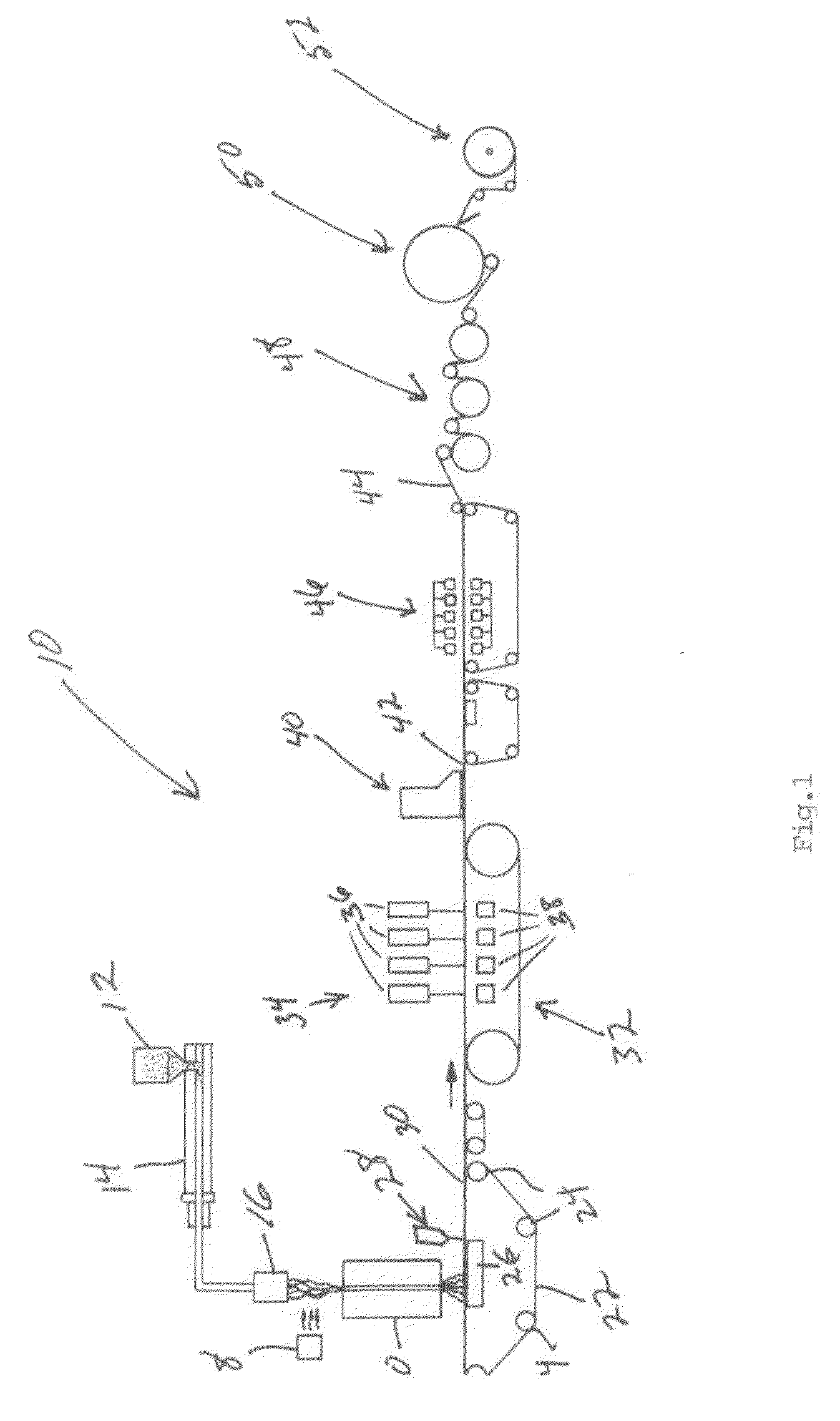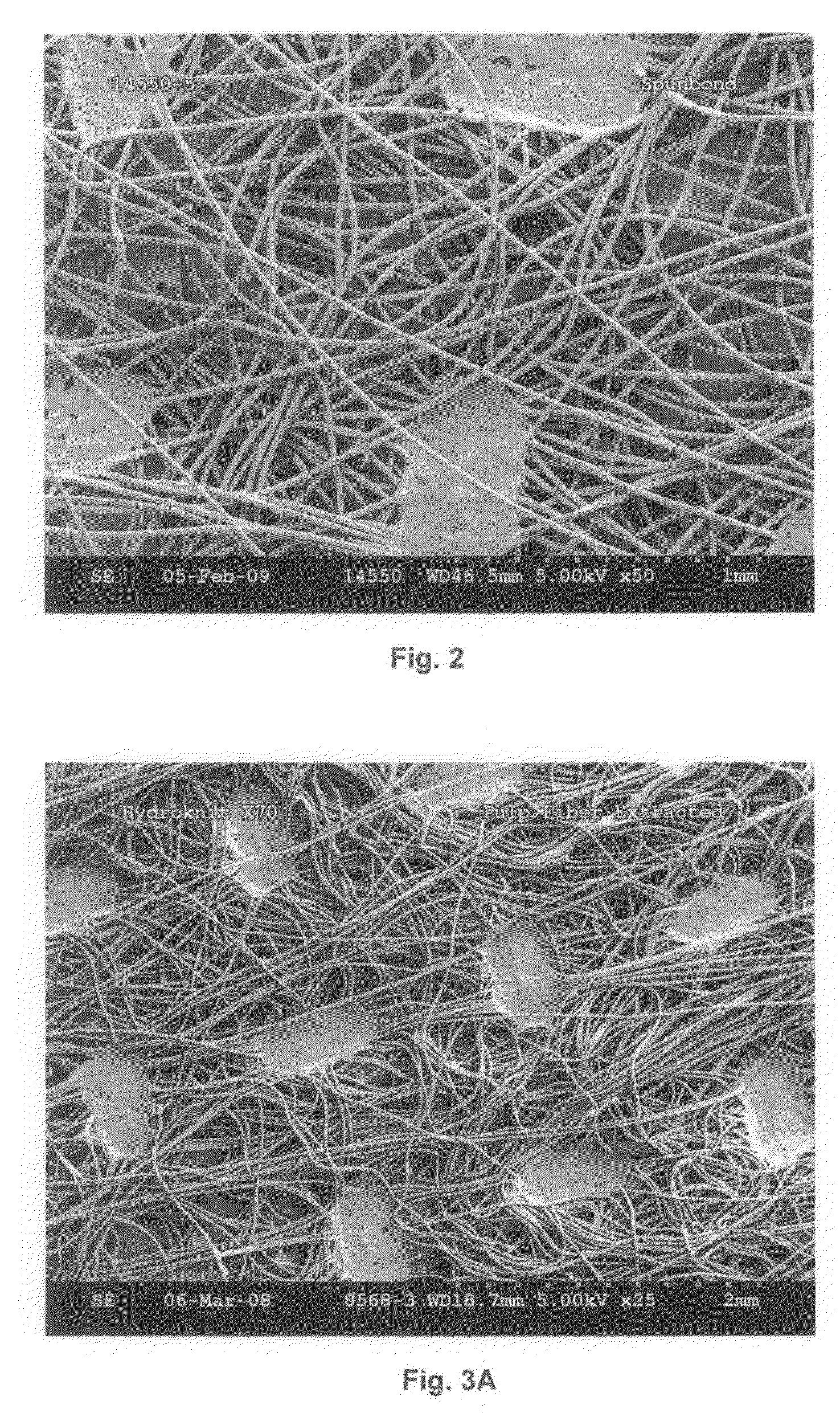Nonwoven Composite And Method For Making The Same
- Summary
- Abstract
- Description
- Claims
- Application Information
AI Technical Summary
Benefits of technology
Problems solved by technology
Method used
Image
Examples
Embodiment Construction
[0038]The unique method of the present invention provides a continuous filament nonwoven web with good uniformity and mobile fibers for use in a nonwoven composite having higher integrity, thereby avoiding the use of those methods described above. This invention includes the immediate use of a “hot air knife”, or HAK, on the just-formed continuous filaments of the nonwoven web to temporarily consolidate the fibers, and then hydroentangles the temporarily consolidated web to controllably disassociate the HAK bonds. Subsequent steps thereafter can comprise applying a discontinuous fiber layer and hydroentangling of the composite to integrate the structure.
[0039]Small diameter continuous filaments can be formed by extruding molten thermoplastic material as separate fibers from a plurality of fine, usually circular capillaries of a spinnerette. The diameter of the extruded filaments is then rapidly reduced via air drawing and subsequently quenched to set the fiber diameter. Fibers produ...
PUM
| Property | Measurement | Unit |
|---|---|---|
| Fraction | aaaaa | aaaaa |
| Fraction | aaaaa | aaaaa |
| Fraction | aaaaa | aaaaa |
Abstract
Description
Claims
Application Information
 Login to View More
Login to View More - R&D
- Intellectual Property
- Life Sciences
- Materials
- Tech Scout
- Unparalleled Data Quality
- Higher Quality Content
- 60% Fewer Hallucinations
Browse by: Latest US Patents, China's latest patents, Technical Efficacy Thesaurus, Application Domain, Technology Topic, Popular Technical Reports.
© 2025 PatSnap. All rights reserved.Legal|Privacy policy|Modern Slavery Act Transparency Statement|Sitemap|About US| Contact US: help@patsnap.com



